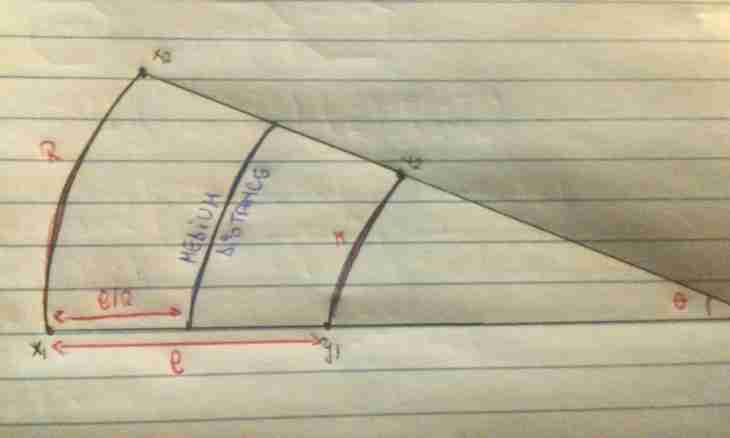In any triangle most often it is necessary to apply theorems of sine and cosines to calculation of lengths of the parties. But among all set of any polygons of this sort there are them "more correct" variations - equilateral, isosceles, rectangular. If the triangle is known that it belongs to one of these versions, ways of calculation of its parameters considerably become simpler. At calculation of lengths of their parties it is often possible to do without trigonometrical functions.
Instruction
1. Length of the party (A) of an equilateral triangle can be found on the radius of the circle (r) entered in it. For this purpose increase it six times and divide into a square root from the three: And = r*6 / √ 3.
2. Knowing the radius of a circumscribed circle (R), too it is possible to calculate length of the party (A) of the correct triangle. This radius is twice more used in the previous formula therefore treble it and too divide into a square root from the three: And = R*3 / √ 3.
3. On perimeter (P) of an equilateral triangle it is even simpler to calculate length of its party (A) as lengths of the parties in this figure are identical. Just divide perimeter in three: And = P/3.
4. In an isosceles triangle the calculation of length of the party on the known perimeter is a little more difficult - it is necessary to know also length at least of one of the parties. If length of the party is known And, the figure lying in the basis, of side (C) you find length of any halving of a difference between perimeter (P) and the size of the basis: In = (P-A)/2. And if the side is known, then determine length of the basis by subtraction from perimeter of the doubled length side: And = P-2*B.
5. Knowledge of the space (S) occupied on the plane by the correct triangle is enough for finding of length of its party (A) too. Take a square root from a ratio of the area and a square root from the three, and double the received result: And = 2 * √ (S / √ 3).
6. In a rectangular triangle, unlike any other, for calculation of length of one of the parties it is enough to know lengths of two others. If the required party - a hypotenuse (C), for this purpose you find a square root from the sum of lengths of the known parties (And yes C) squared: With = √ (And² + In²). And if it is required to calculate length of one of legs, then the square root should be taken from the difference of squares of lengths of a hypotenuse and other leg: And = √ (With²-in²).

